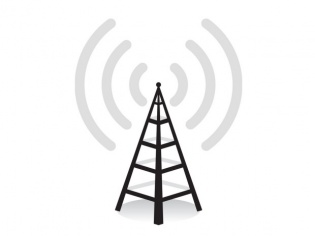-
Chandrakant 'CK' Isi
17th Apr 2014
In the previous edition of Jargon Buster, we explained different types of screens found in mobile phones. This time around, we will try to make sense of mobile phone network related terms. If you wanted to end the confusion surrounding these fancy terms such as GSM, CDMA, EDGE, and LTE, you’ve landed on the right page.
GSM
If you’re using a smartphone in India, you’re most likely on GSM (Global System for Mobile Communication) network. The technology dates back to 1982, when it was known as Groupe Spécial Mobile (GSM). It was formed by the Conference of European Posts and Telegraphs (CEPT) to standardise mobile telecommunications in Europe.Currently, it’s the world’s most widely used cell phone technology. According to GSMA (GSM Association) over 80% of total mobile connections are powered by GSM. It's a cellular type network, where coverage is provided by multiple base stations (remember those antenna's we see above certain building rooftops?). Each cell uses a different set of frequencies to avoid interference. To connect to a network, your phone then searches for cells in its area.
Advantage: Better coverage.
Operating Frequencies: 900 MHz and 1.8 GHz (Europe and India), 1.9 GHz and 850 MHz (US).
Notable examples: Airtel, Vodafone, Idea, Loop.
CDMA
CDMA (Code Division Multiple Access) is the competitor of GSM network. It's mostly used in the US and some Asian countries. The first CDMA device LK-1 was built in 1957 by a Soviet army radio engineer. Later, it was opened up for civilians. American chip-maker Qualcomm standardised the technology in 90s.Unlike GSM's cellular system, CDMA uses a spread-spectrum tech. It uses electromagnetic energy to spread network signal. CDMA transmissions cannot be demodulated easily, hence, it's considered more secure than GSM. These signals can’t be easily blocked by mobile jammers. Because of these features, militaries around the world use CDMA network. According to a report published by Prof. Joel Moskowitz, GSM phones emit about 28 times more radiation on average compared to CDMA phones.
Advantage: Low on radiation.
Operating Frequencies: 800 and 1900.
Notable examples: Reliance, Tata Indicom.
Which one should you choose?
Keeping all the technical mumbo-jumbo aside, from personal experience I can tell that GSM works better CDMA (at least in India). Thanks to contacts between carriers, GSM offers worldwide roaming. It allows travellers to access the same mobile services at home and abroad (supported in up to 219 countries). Within a country also, GSM networks cover more area when compared to CDMA network. On the other hand, if you’re health conscious, CDMA phones are supposed to be safer than their GSM counterparts.GPRS
In GSM networks, GPRS (General Packet Radio Service) is a data transmission technology. For efficiency, GPRS uses the network only when there is data to be sent. It was more cost effective than the earlier circuit switched data, which billed per minute of connection time. This service started spreading all over the world starting from 1999.Speed: 56–114 kbit/second
EDGE (2.5G)
EDGE (Enhanced Data rates for GSM Evolution) is commonly known as Enhanced GPRS. It’s based on GPRS tech, but with better methods of transmitting data, EDGE offers three times the performance compared to its predecessor. Despite the introduction of 3G and 4G, people in developing countries such as India still opt for EDGE connection due to its affordability.Speed: 473 kbit/second
3G
3G (3rd Generation Mobile Telecommunications), is a network standard. Any cellular data connection meeting a certain levels of reliability and 144 kbit/second speed can be labelled as 3G. First such connection to fulfil this criteria launched by Japan’s NTT DoCoMo in 2001.On CDMA network, C2K (CDMA2000) network technology adheres to 3G standards. In GSM camp, it’s the UMTS (Universal Mobile Telecommunications System).
Speed: 144 kbit/second – 21 Mb/second
4G
4G stands for Fourth Generation Mobile Telecommunications. Unlike its predecessors, 4G network does not support circuit-switched data transfer. Instead, it uses IP-based communication systems (even for normal voice calls). According to ITU-R (International Telecommunications Union-Radio communications, a 4G mobile connection should offer peak speed requirements of 1 gigabit per second (Gbit/s).Currently, the Mobile WiMAX standard (introduced in 2006), LTE (Long Term Evolution) (launched in 2009) are generally marketed as 4G. However, many expert claim that WiMax isn't true 4G.
The only problem with this technology right now is that it uses different frequency bands depending on the region. So if you own an American LTE smartphone, it won't be supported in Japan.Speed: 1 – 100 Gbit/second
Jargon Buster: Mobile Phone Network And Data Connection | TechTree.com
Jargon Buster: Mobile Phone Network And Data Connection
Everything you need to know about mobile network and data types.
News Corner
- DRIFE Begins Operations in Namma Bengaluru
- Sevenaire launches ‘NEPTUNE’ – 24W Portable Speaker with RGB LED Lights
- Inbase launches ‘Urban Q1 Pro’ TWS Earbuds with Smart Touch control in India
- Airtel announces Rs 6000 cashback on purchase of smartphones from leading brands
- 78% of Indians are saving to spend during the festive season and 72% will splurge on gadgets & electronics
- 5 Tips For Buying A TV This Festive Season
- Facebook launches its largest creator education program in India
- 5 educational tech toys for young and aspiring engineers
- Mid-range smartphones emerge as customer favourites this festive season, reveals Amazon survey
- COLORFUL Launches Onebot M24A1 AIO PC for Professionals







TECHTREE